Abstract
This paper is concerned with the accurate and rapid calculation of extracellular potentials and currents from an active myelinated nerve fiber in a volume conductor, under conditions of normal and abnormal conduction. The neuroelectric source for the problem is characterized mathematically by using a modified version of the distributed parameter model of L. Goldman and J. S. Albus (1968, Biophys. J., 8:596-607) for the myelinated nerve fiber. Solution of the partial differential equation associated with the model provides a waveform for the spatial distribution of the transmembrane potential V(z). This model-generated waveform is then used as input to a second model that is based on the principles of electromagnetic field theory, and allows one to calculate easily the spatial distribution for the potential everywhere in the surrounding volume conductor for the nerve fiber. In addition, the field theoretic model may be used to calculate the total longitudinal current in the extracellular medium (I0L(z)) and the transmembrane current per unit length (im(z)); both of these quantities are defined in connection with the well-known core conductor model and associated cable equations in electrophysiology. These potential and current quantities may also be calculated as functions of time and as such, are useful in interpreting measured I0L(t) and im(t) data waveforms. An analysis of the accuracy of conventionally used measurement techniques to determine I0L(t) and im(t) is performed, particularly with regard to the effect of electrode separation distance and size of the volume conductor on these measurements. Also, a simulation of paranodal demyelination at a single node of Ranvier is made and its effects on potential and current waveforms as well as on the conduction process are determined. In particular, our field theoretic model is used to predict the temporal waveshape of the field potentials from the active, non-uniformly conducting nerve fiber in a finite volume conductor.
Full text
PDF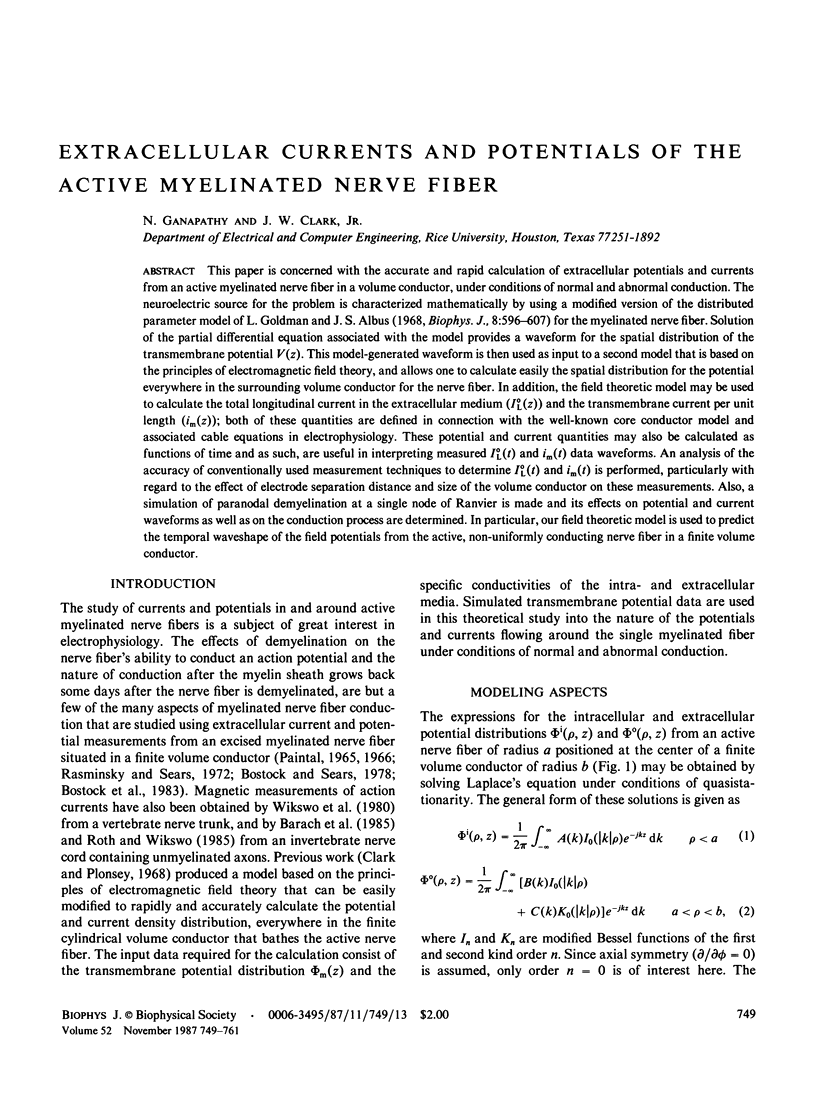
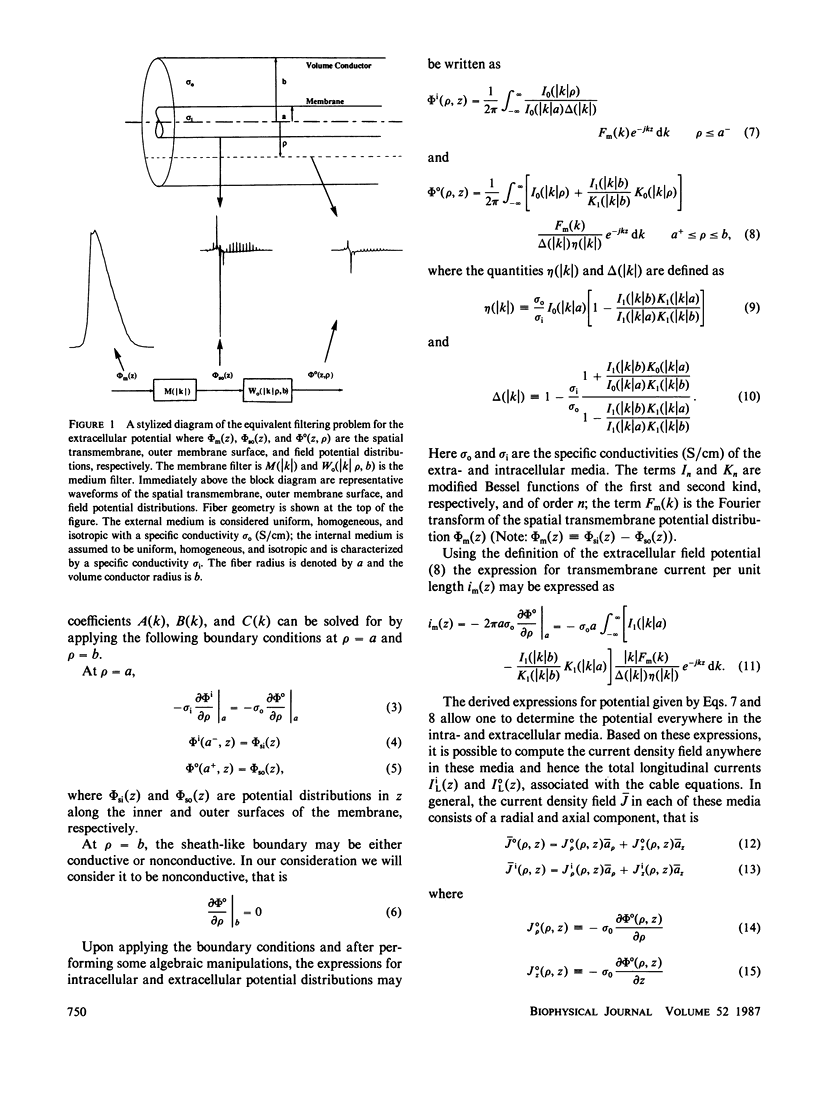
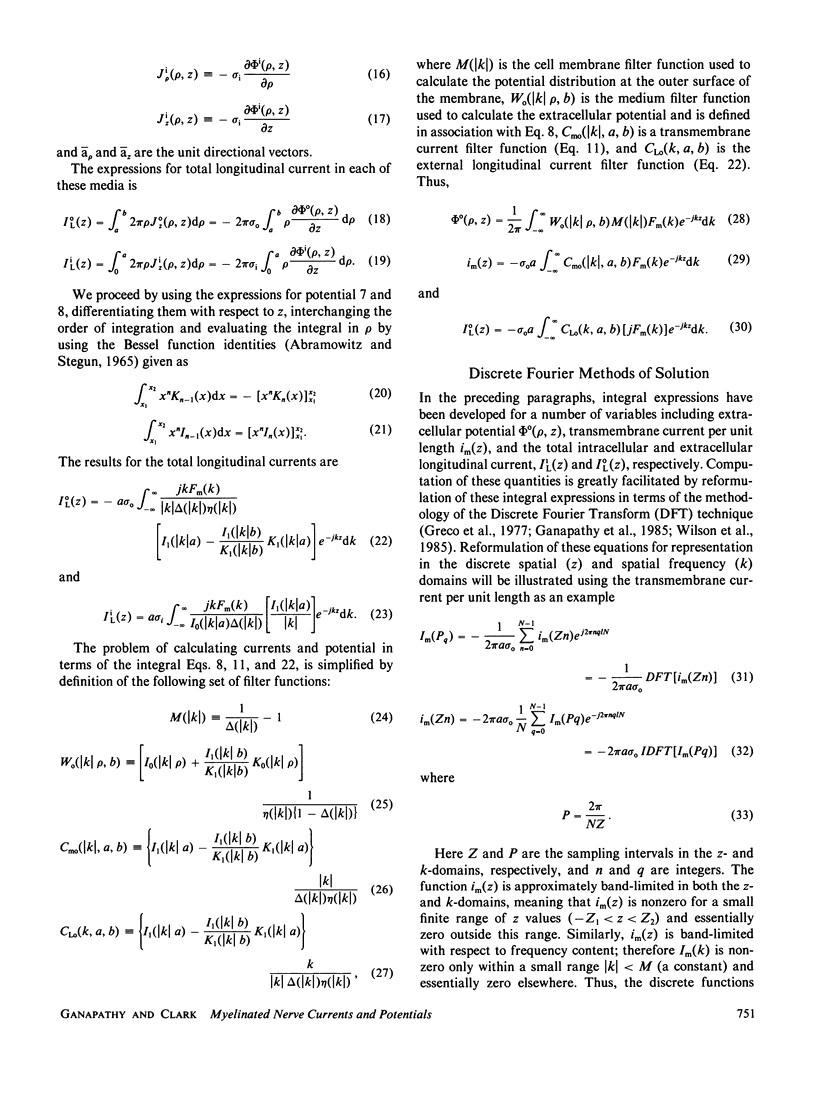
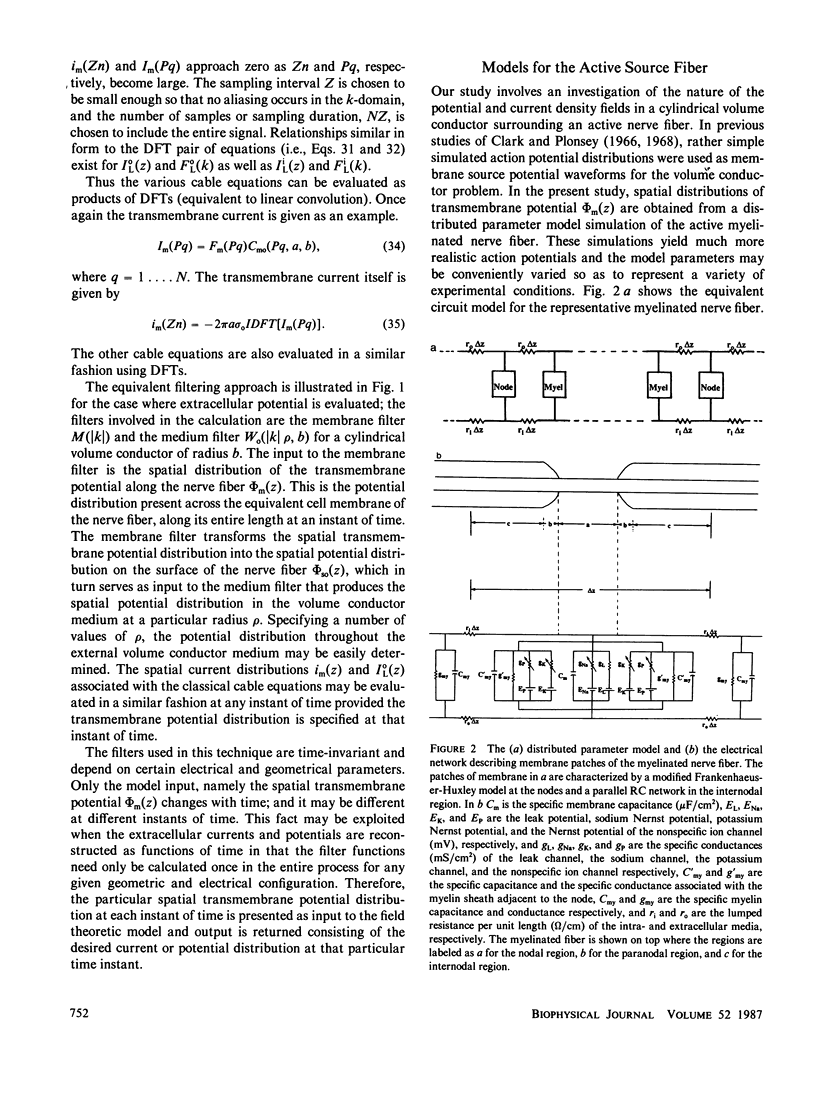
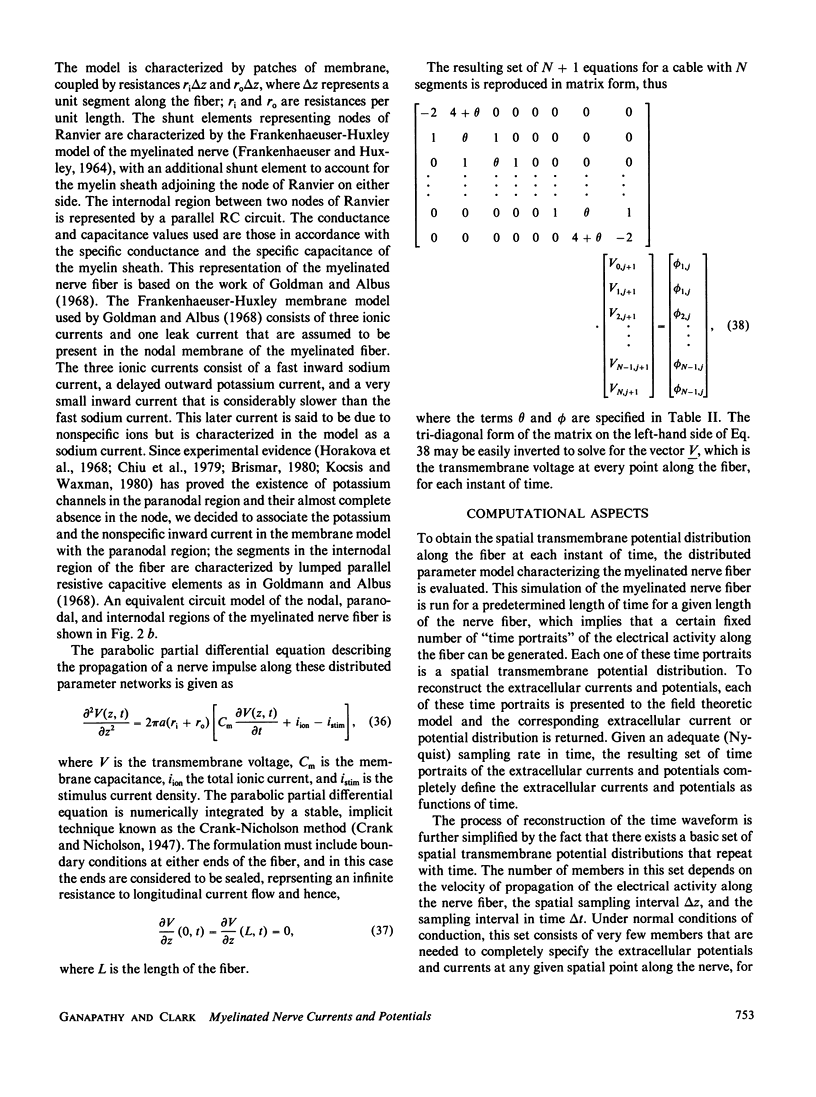
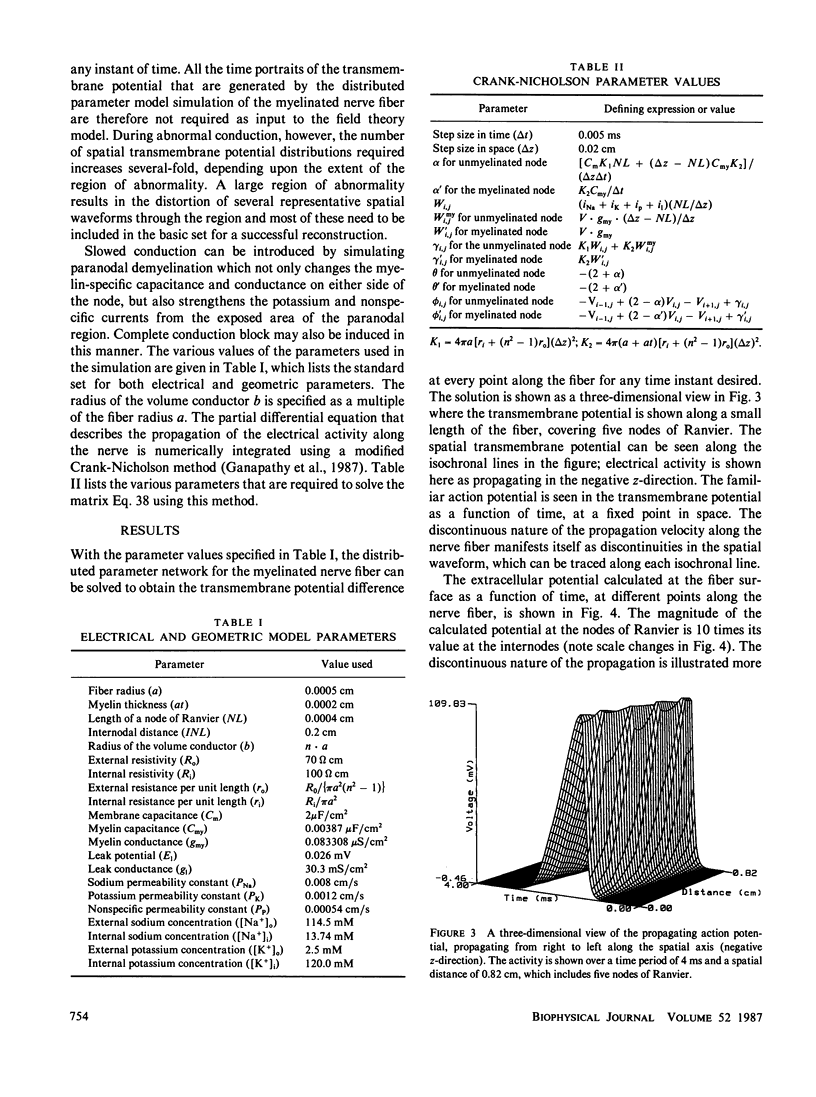
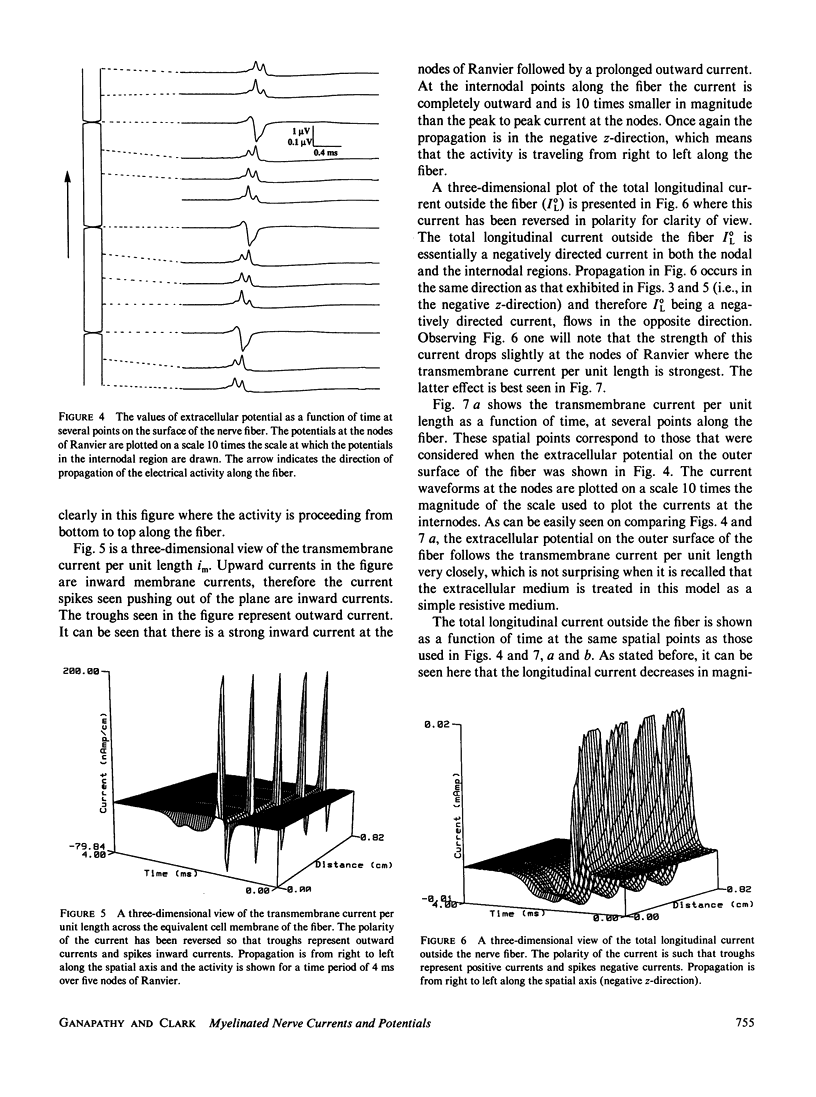
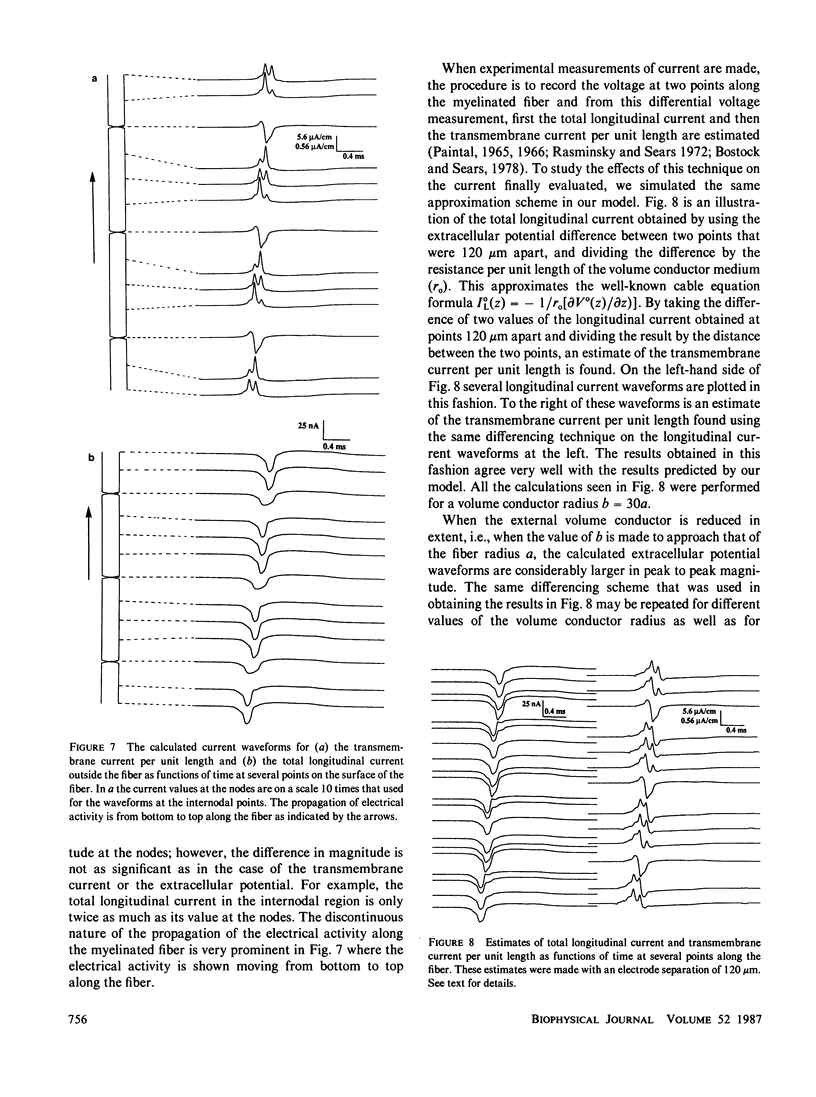
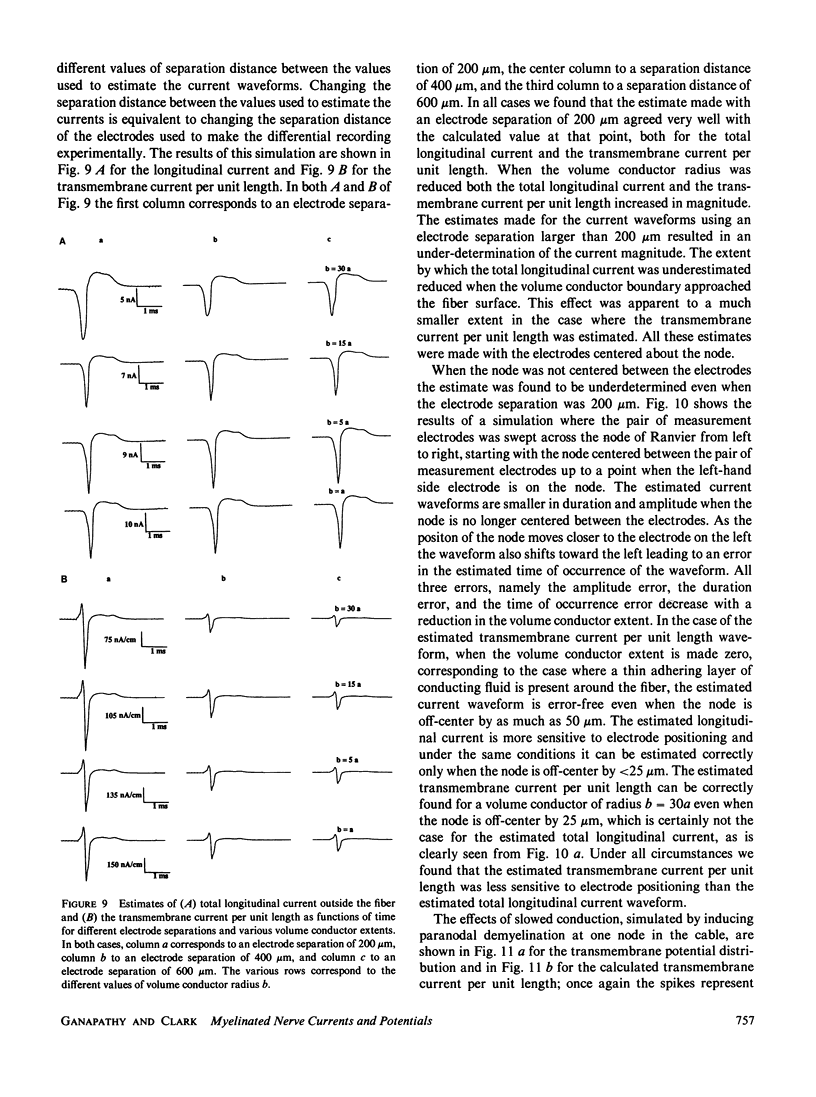
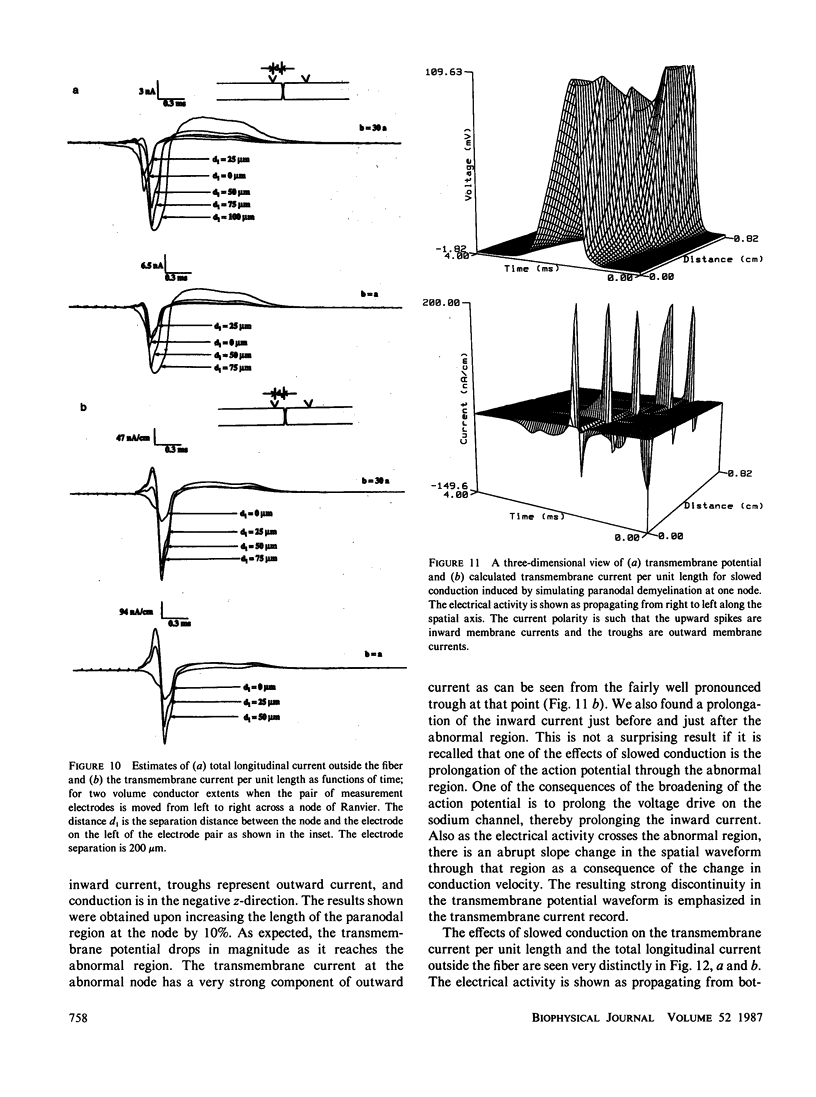
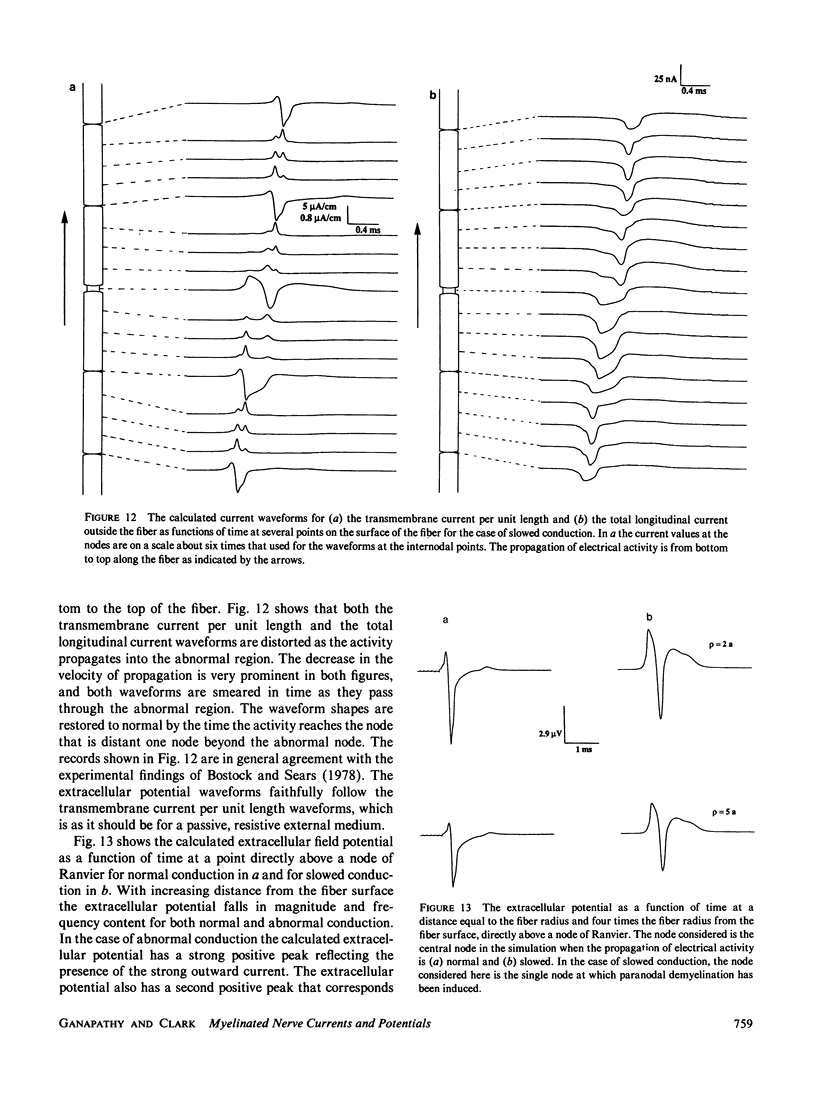
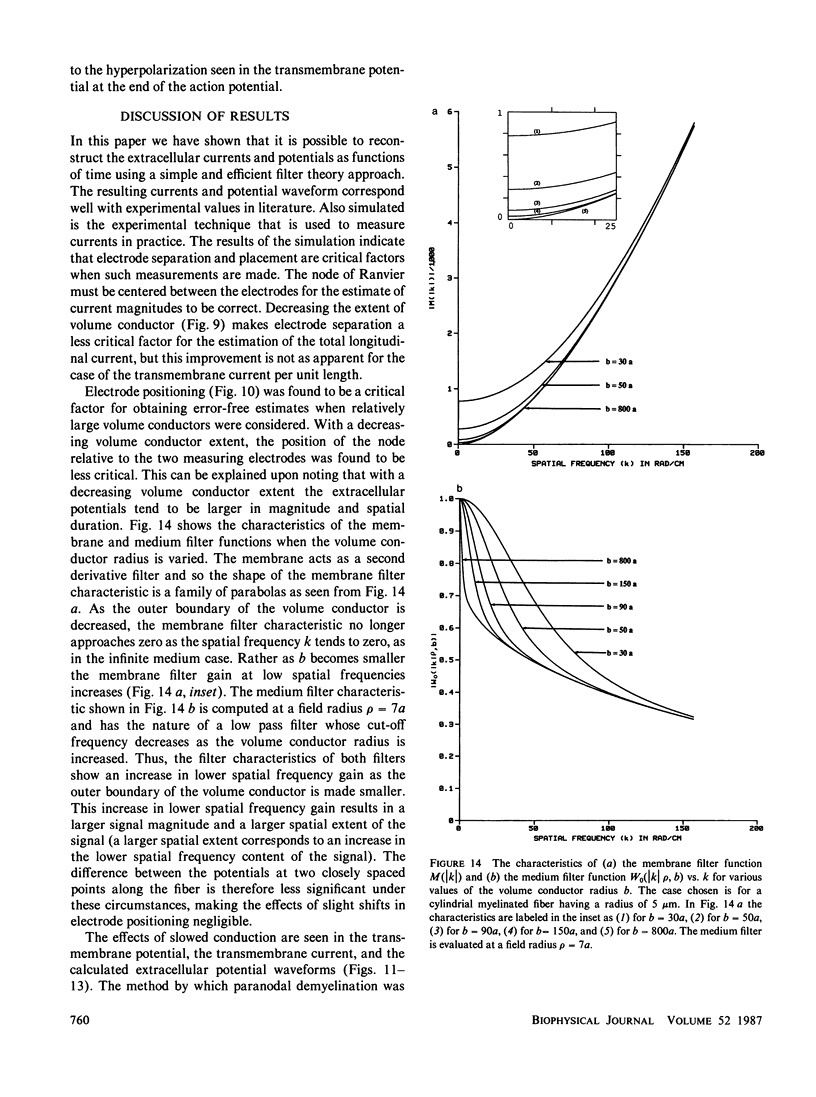
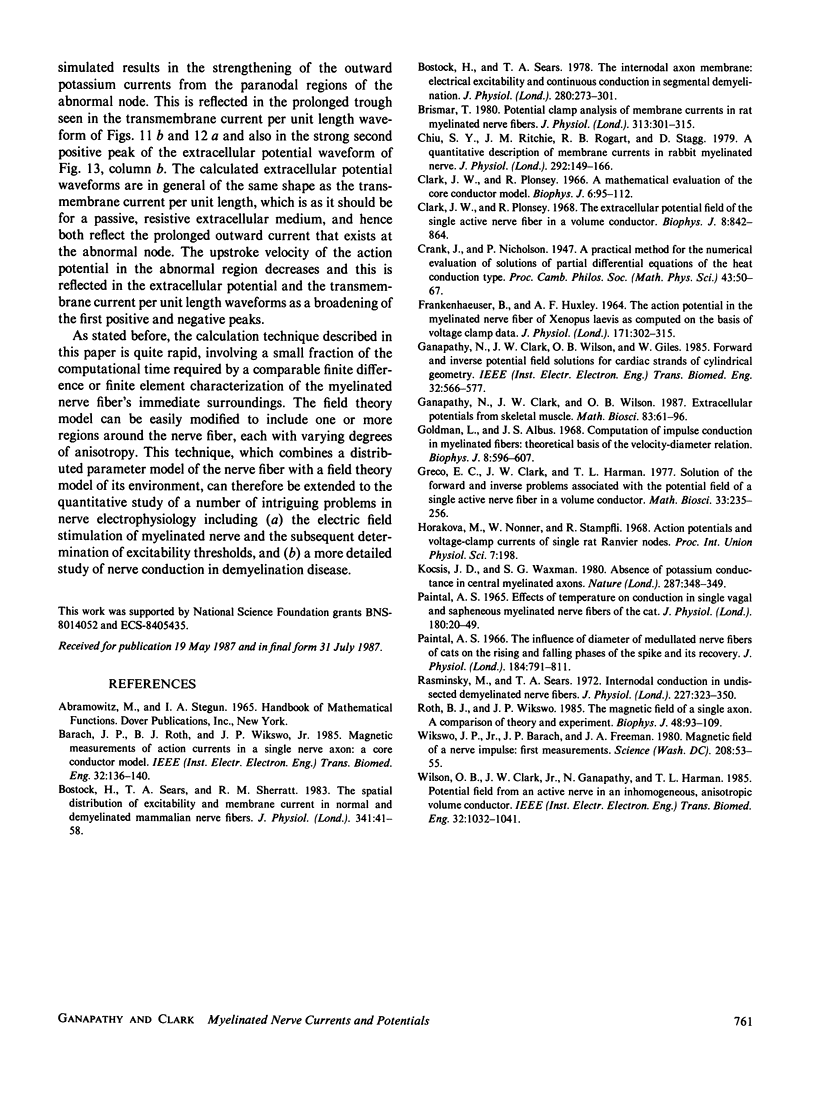
Selected References
These references are in PubMed. This may not be the complete list of references from this article.
- Barach J. P., Roth B. J., Wikswo J. P., Jr Magnetic measurements of action currents in a single nerve axon: a core-conductor model. IEEE Trans Biomed Eng. 1985 Feb;32(2):136–140. doi: 10.1109/TBME.1985.325434. [DOI] [PubMed] [Google Scholar]
- Bostock H., Sears T. A., Sherratt R. M. The spatial distribution of excitability and membrane current in normal and demyelinated mammalian nerve fibres. J Physiol. 1983 Aug;341:41–58. doi: 10.1113/jphysiol.1983.sp014791. [DOI] [PMC free article] [PubMed] [Google Scholar]
- Bostock H., Sears T. A. The internodal axon membrane: electrical excitability and continuous conduction in segmental demyelination. J Physiol. 1978 Jul;280:273–301. doi: 10.1113/jphysiol.1978.sp012384. [DOI] [PMC free article] [PubMed] [Google Scholar]
- Chiu S. Y., Ritchie J. M., Rogart R. B., Stagg D. A quantitative description of membrane currents in rabbit myelinated nerve. J Physiol. 1979 Jul;292:149–166. doi: 10.1113/jphysiol.1979.sp012843. [DOI] [PMC free article] [PubMed] [Google Scholar]
- Clark J., Plonsey R. A mathematical evaluation of the core conductor model. Biophys J. 1966 Jan;6(1):95–112. doi: 10.1016/S0006-3495(66)86642-0. [DOI] [PMC free article] [PubMed] [Google Scholar]
- Clark J., Plonsey R. The extracellular potential field of the single active nerve fiber in a volume conductor. Biophys J. 1968 Jul;8(7):842–864. doi: 10.1016/S0006-3495(68)86524-5. [DOI] [PMC free article] [PubMed] [Google Scholar]
- FRANKENHAEUSER B., HUXLEY A. F. THE ACTION POTENTIAL IN THE MYELINATED NERVE FIBER OF XENOPUS LAEVIS AS COMPUTED ON THE BASIS OF VOLTAGE CLAMP DATA. J Physiol. 1964 Jun;171:302–315. doi: 10.1113/jphysiol.1964.sp007378. [DOI] [PMC free article] [PubMed] [Google Scholar]
- Ganapathy N., Clark J. W., Jr, Wilson O. B., Giles W. Forward and inverse potential field solutions for cardiac strands of cylindrical geometry. IEEE Trans Biomed Eng. 1985 Aug;32(8):566–577. doi: 10.1109/TBME.1985.325481. [DOI] [PubMed] [Google Scholar]
- Goldman L., Albus J. S. Computation of impulse conduction in myelinated fibers; theoretical basis of the velocity-diameter relation. Biophys J. 1968 May;8(5):596–607. doi: 10.1016/S0006-3495(68)86510-5. [DOI] [PMC free article] [PubMed] [Google Scholar]
- Kocsis J. D., Waxman S. G. Absence of potassium conductance in central myelinated axons. Nature. 1980 Sep 25;287(5780):348–349. doi: 10.1038/287348a0. [DOI] [PubMed] [Google Scholar]
- Paintal A. S. Effects of temperature on conduction in single vagal and saphenous myelinated nerve fibres of the cat. J Physiol. 1965 Sep;180(1):20–49. [PMC free article] [PubMed] [Google Scholar]
- Paintal A. S. The influence of diameter of medullated nerve fibres of cats on the rising and falling phases of the spike and its recovery. J Physiol. 1966 Jun;184(4):791–811. doi: 10.1113/jphysiol.1966.sp007948. [DOI] [PMC free article] [PubMed] [Google Scholar]
- Rasminsky M., Sears T. A. Internodal conduction in undissected demyelinated nerve fibres. J Physiol. 1972 Dec;227(2):323–350. doi: 10.1113/jphysiol.1972.sp010035. [DOI] [PMC free article] [PubMed] [Google Scholar]
- Roth B. J., Wikswo J. P., Jr The magnetic field of a single axon. A comparison of theory and experiment. Biophys J. 1985 Jul;48(1):93–109. doi: 10.1016/S0006-3495(85)83763-2. [DOI] [PMC free article] [PubMed] [Google Scholar]
- Wikswo J. P., Barach J. P., Freeman J. A. Magnetic field of a nerve impulse: first measurements. Science. 1980 Apr 4;208(4439):53–55. doi: 10.1126/science.7361105. [DOI] [PubMed] [Google Scholar]
- Wilson O. B., Clark J. W., Jr, Ganapathy N., Harman T. L. Potential field from an active nerve in an inhomogeneous, anisotropic volume conductor--the forward problem. IEEE Trans Biomed Eng. 1985 Dec;32(12):1033–1041. [PubMed] [Google Scholar]


